Jadis JPL MkII/SE300B & DeVore Fidelity O/96 Tube Amp/Speaker System
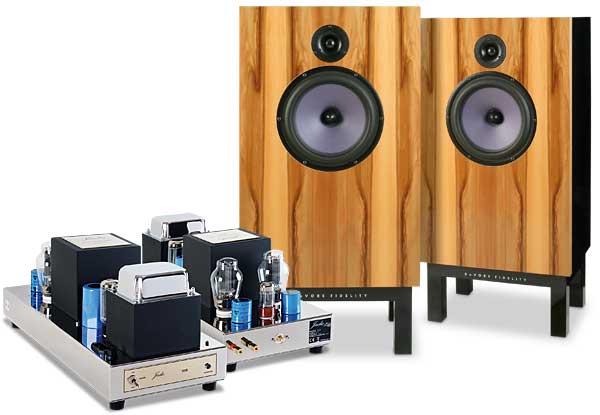
 First from a hand-selected portfolio of 'artisan' hi-fi separates, this pairing of low output tubes with high sensitivity speakers boasts a very special synergy... and sound
First from a hand-selected portfolio of 'artisan' hi-fi separates, this pairing of low output tubes with high sensitivity speakers boasts a very special synergy... and sound
System matching remains as much an art as it does a science. There's always the easy route – opting for a collection of one-brand separates with the promise of full technical compatibility and the expectation of similar 'voicing' throughout. aSlightly trickier is the pairing of components from brands that have an overlap in their core design philosophies – a route that often leads to the most satisfying musical experience but which requires a depth of knowledge on the part of both enthusiast and friendly hi-fi dealer. The third route – random component selection and a reliance on blind luck is not one we'll be pursuing here!
So distributor Absolute Sounds' recent announcement [HFN Feb '21] that it was to begin curating a collection of individual components from disparate brands struck a chord. This artisan/system-building project, dubbed 'Ten', kicks off with two like-minded brands from opposite sides of the pond – Jadis, from France, and DeVore Fidelity, based in New York. Nothing in common? Far from it: Jadis has a commitment to low-powered single-ended tube amps, represented here by the SE300B monoblocks (£6498 each) and partnered with the newer £8498 JPL MkII tube preamplifier, while DeVore specialises in high-sensitivity, easy-to-drive loudspeakers.
The Jadis monoblock amplifiers are rated at a mere 10W courtesy of each chassis' parallel pair of 300B triodes – single-ended and therefore necessarily operating in 'pure Class A'. DeVore's £13,500 'wide baffle' Orangutan O/96 loudspeakers have a rated 96dB sensitivity and come in lacquered ebony wood, lace walnut, wild cherry and bird's eye maple finishes, complete with matching lacquered wooden stands. A match made in heaven? Time to find out...

Flamboyant Fascias
With their chromed-steel chassis and gold-coloured faceplates, gold-plated brass controls, toggle switches and full-sized LED indicators, the Jadis pre/power amplifiers succeed in looking purposeful, distinctive and 'of an era' rather than ostentatious.

The JPL MkII preamp is simplicity itself with just five single-ended line inputs, a tape loop and preamp output, all on RCAs. There's no remote but the mute toggle is very useful and the beautifully weighted, detented volume control is a real delight to use. As I discuss in my Lab Report the JPL MkII is really two preamps in one – the four higher gain line inputs employing a pair of ECC83 triodes while the one marked 'CD' uses a single ECC82. All the tubes are selected and matched by Jadis, including those used in the power supply, just as the passives – capacitors, resistors, etc, – have been chosen after countless hours of auditioning. 'Voicing' is a core principle of all Jadis amplifiers.
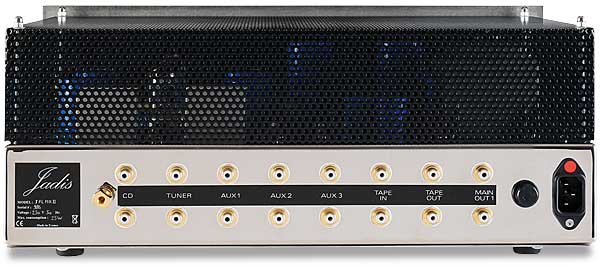
The same principles apply to the partnering SE300B monoblocks – the 300Bs are sourced from Electro Harmonix and the 6SN7 driver triodes, running at 400V here, are obtained from (I believe) a Russian supplier. Ordinarily all the tubes are protected under square, perforated cages although they can be removed (as illustrated in our pictures) if you live in a pet/child-free environment and are confident that you'll never lean over them with a cup or glass of liquid of any kind in your hand...
The rear of the chassis hosts an RCA input and single set of 4mm speaker outlets for '4-8ohm speakers', although the transformer secondary may be reconfigured for 4ohm or less via a set of bus-bar interlinks inside the casework.
Are You A Believer?
Now I'll address the elephant in the room – 10W for a £13,000 stereo pair? On some level, SET (Single-Ended Triode) amplifiers feed into a niche audio belief (our Ken would call it a cult) that a single 300B triode – a paralleled pair in this instance – offers a purity of performance and simplicity of design that cannot be achieved by pentodes, push-pull or ultralinear modes of operation.
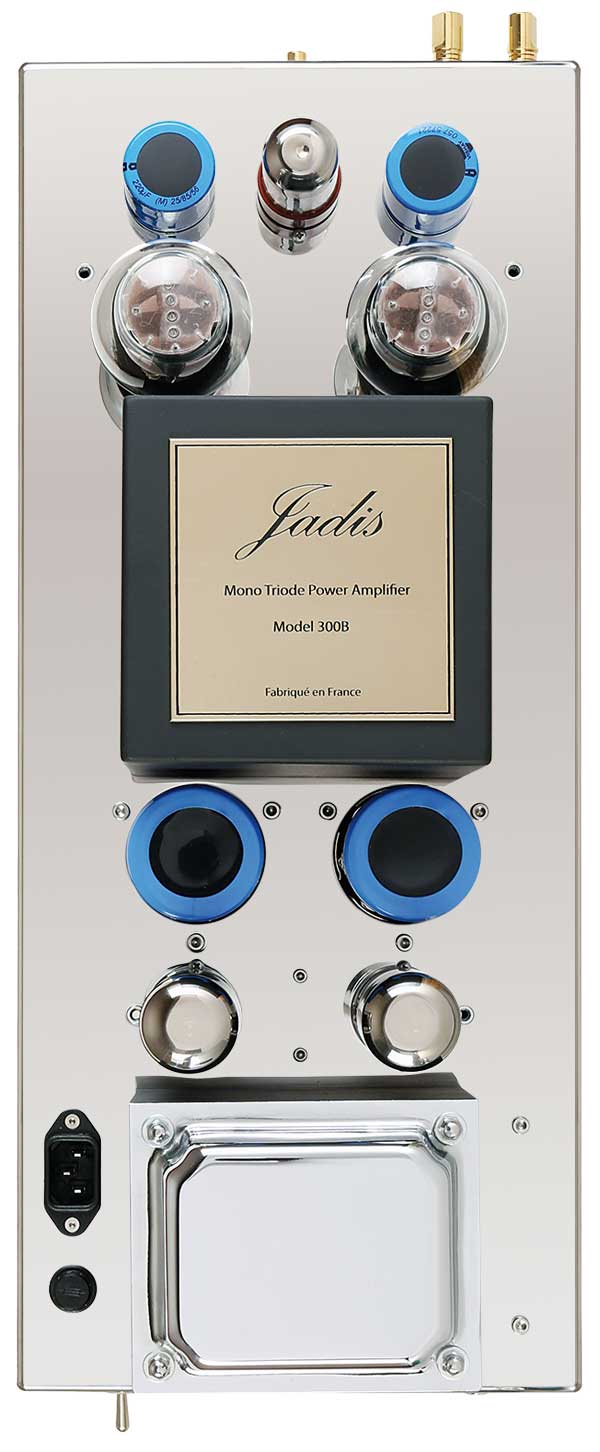
Much of this is guff, of course, and I'll point out that Jadis itself is not proselytising from this particular pulpit. In practice, while a single tube and transformer has the air of elegance about it, a successful implementation revolves almost entirely around the design – the dance between permeability, inductance, leakage, LF saturation and HF response – of the output transformer. Jadis, by all accounts, has this nailed, with proprietary transformers 'hand-made on a digital winding machine' before being potted in a vibration-damping resin.
The Funky Gibbon
Now to Jadis' partner in this delicious double act... DeVore Fidelity has two principal ranges, the more affordable and slimline Gibbon series, and the high sensitivity Orangutans of which the O/96 was the first of three models, originally launched in 2012 and still the brand's top-seller. Designer/owner John DeVore has no particular 'primate fixation', he assured me, 'hi-fi should be fun and gibbons are funky and fun too. Plus, the O/96's wide orange baffle reminded me of an Orangutan'. Well, I'm pleased that's now all cleared up...
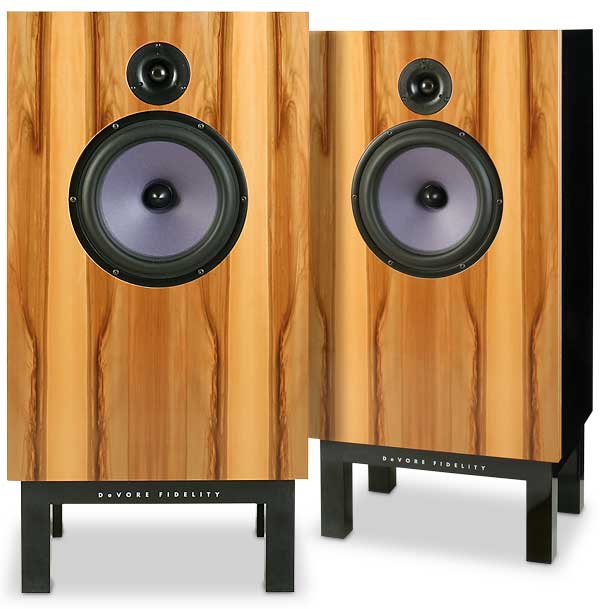
Built on an industrial park in Brooklyn, New York, the O/96's cabinets are fashioned from a mix of MDF (rear panel), MDF/ply (bottom), HDF for the sides and top, with a machined US-made Baltic birch for the 1in-thick baffle. Lace walnut is the default veneer (as pictured here) with up to ten coats of hand-polished lacquer applied across all the cabinet surfaces except the underside, the latter playing host to inset 4mm Cardas-copper speaker terminals and wooden runners that locate the speaker into DeVore's matching solid maple stands.
These are also lacquered to a glorious piano-black finish and have no metal spikes or fasteners, so the speakers are both mated and decoupled to/from the stands' surface by four small pellets of white tack at each corner. Incidentally, the standard veneer – quite stunning in its own right – is pressed in batches of 100, but custom finishes are easily accommodated as illustrated on DeVore's Facebook page.
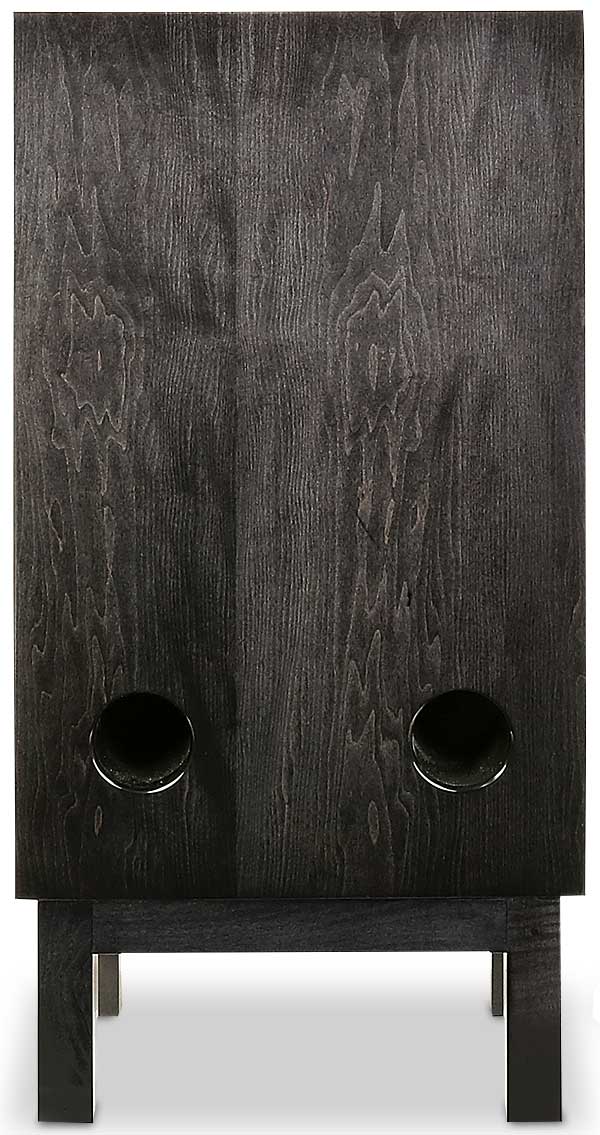
Drive Of Your Life
The custom drivers are produced for DeVore by long-term partner SEAS and include a 28mm silk fabric dome tweeter and a long-throw 250mm paper-cone bass/mid driver with soft rubber surround. The treble dome works into a wool-damped rear chamber, is equipped with a double magnet and is gently horn-loaded, the flare only really taking effect below 7kHz or so.
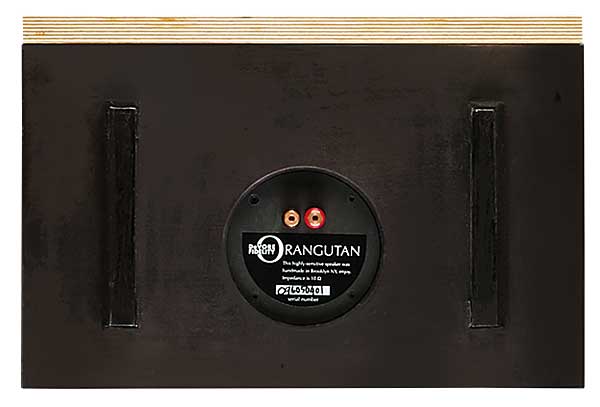
The bass/mid unit is really something special and those readers steeped in audiophile lore may well recognise the classic Müller blue paper cone. This uses a similar pulp to the larger of Tannoy's iconic coaxial drivers, untreated here except for some reinforcing lacquer at the cone's throat where it's bonded to a multi-layer copper voice-coil and Kapton former. Behind this there's a large ferrite/ceramic magnet – so no fancy rare-earth materials here.
John DeVore is somewhat less eager to release details of the O/96's crossover except to say it's a 'minimum reactance, compound-order' network derived directly from his earliest work on the first, non-commercial, Gibbon loudspeaker.
Finally, should you wish to conceal this beacon of blue – the cones will likely change to a darker or greenish colour with UV and time – then DeVore also supplies a magnetically-attached grille. The frame and coarse Tygan-like fabric are not without some subjective consequence however, so these speakers are best enjoyed naked, if you get my drift...























































